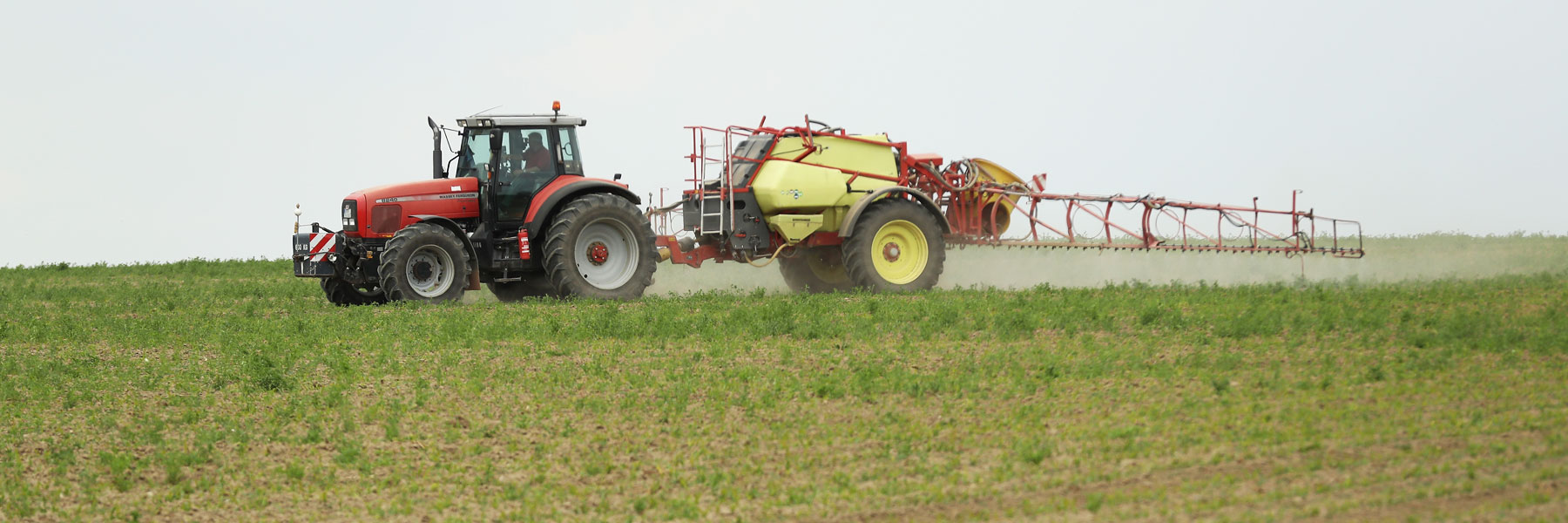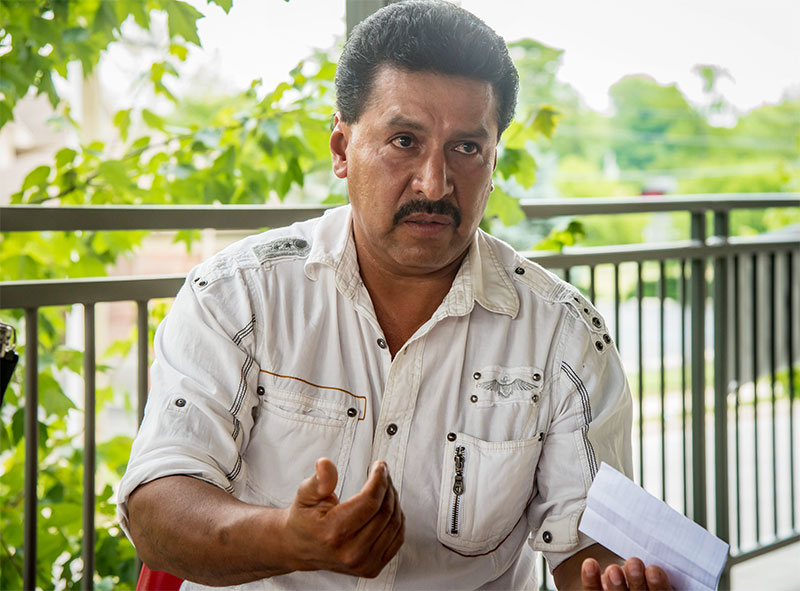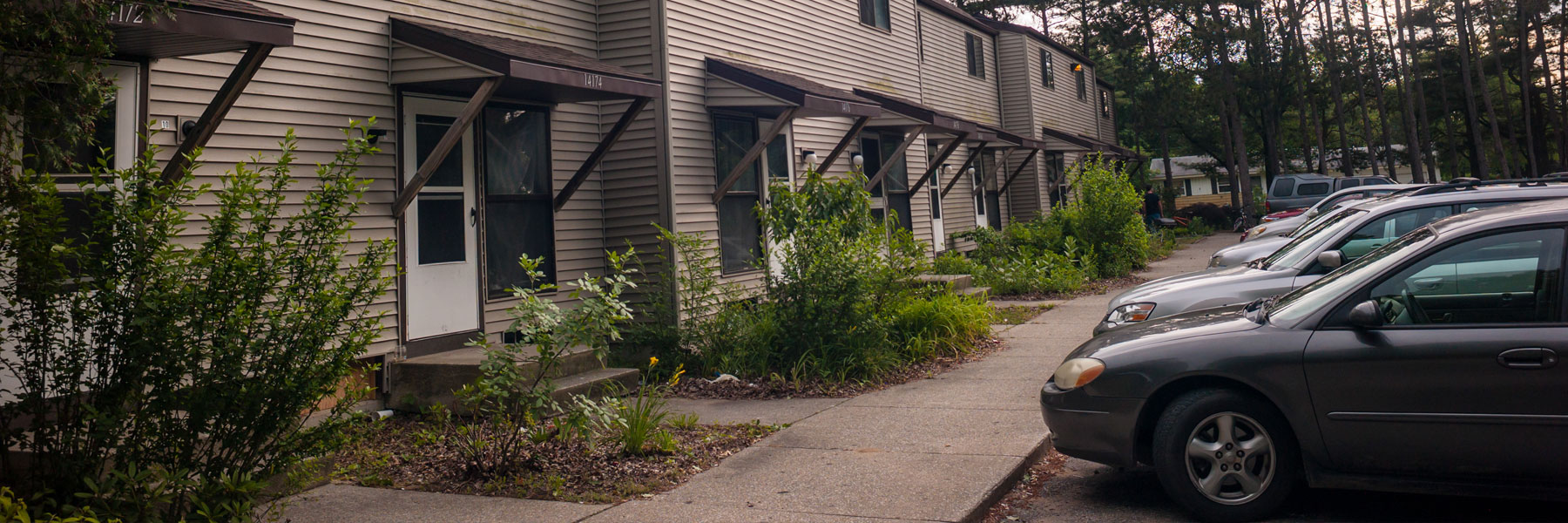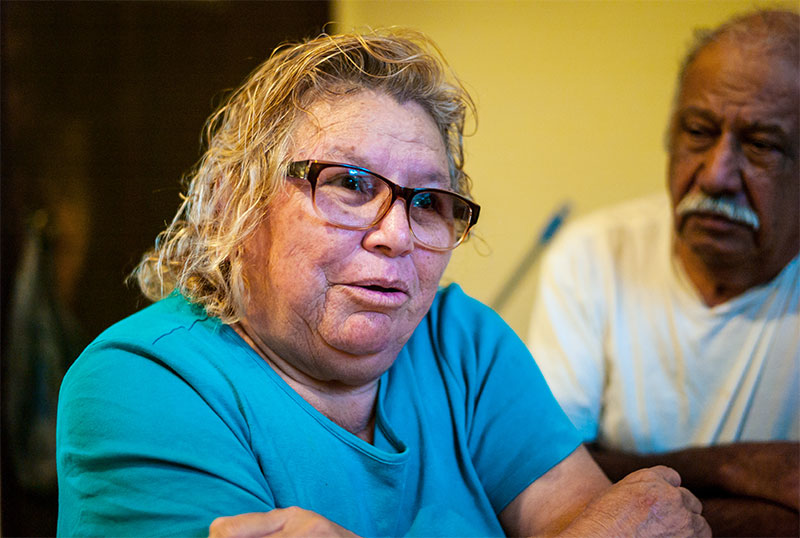
Inside DuPont and Monsanto's Migrant Labor Camps
An in-depth investigation reveals that multibillion-dollar Big Ag corporations—including DuPont Pioneer and Monsanto—as well as small-scale farmers routinely use labor recruiters who crowd migrant workers in housing riddled with health and safety violations, such as bed bug infestations and a lack of running water. A newly built public database of housing inspection records exposes the dramatic scope of the problem: When state inspectors visit migrant labor camps, they find violations as much as 60 percent of the time.
OCTOBER ISSUE | September 20, 2016
In 2012, seven migrant farmworkers sued the agricultural giant Monsanto, charging that the $4-per-acre piece rate they were paid for corn detasseling in Indiana was substantially less than the federal minimum wage.
That was not the only way they were cheated, according to the initial complaint filed by the nonprofit Texas RioGrande Legal Aid: Hermilo Cantu Jr., a labor recruiter for Monsanto—also named as a defendant—promised the farmworkers free housing with kitchen facilities. But the workers were instead housed in a cramped motel, then moved to a former nursing home and charged $300 per room. The “kitchen” was a school bus that had been outfitted with stoves and refrigerators, but lacked proper ventilation or adequate space to accommodate the more than 30 migrant farmworkers.
Asked for comment, Monsanto spokesperson Charla Lord said, “We are committed to working quickly and collaboratively with state legal aid groups to address any worker concerns, as we did with this case. … We expect that all housing provided for use by workers providing services to Monsanto meets all required federal, state and local safety and health standards.” The lawsuit was settled for an undisclosed amount in 2013 and dismissed with prejudice.
Millions of migrants who pick and process America’s fruits and vegetables face difficult and dangerous working conditions, including high risks of heatstroke, dehydration and exposure to toxic pesticides. The Monsanto lawsuit highlights that their plight often doesn’t end there. When workers leave the fields, many return to housing riddled with health and safety hazards—housing that’s often owned or arranged by employers or employers’ agents.
An investigation by In These Times and the Midwest Center for Investigative Reporting reveals that both small-scale farmers and multibillion-dollar Big Ag corporations—DuPont Pioneer and Monsanto among them—routinely use third-party labor recruiters who crowd workers in trailers, dilapidated motels and ramshackle apartments.
While state and federal officials are charged with overseeing migrant housing, thousands of inspection records obtained from eight states under the Freedom of Information Act show that some facilities continue racking up housing violations year after year. Fearful of complaining, migrant farmworkers often spend months living in the substandard housing, some even paying substantial rent fees out of their meager paychecks.

From the October 2016 Issue
This reporting was made possible by a grant from the Leonard C. Goodman Institute for Investigative Reporting.

Baltazar Arvizu, 50, says that in his more than 30 years working as a migrant farmworker throughout the United States, he has lived in housing camps that were like “barns for animals.”
A public database of inspection records built by the Midwest Center reveals the scope of the problem. The database contains more than 1,900 individual violations across about 470 housing facilities in the major farm states of Illinois, Indiana, Iowa, Missouri, Michigan, Ohio, Texas and Wisconsin between 2012 and 2016.
When state inspectors visit migrant housing, they find health and safety violations as much as 60 percent of the time. But a fractured regulatory system leaves state agencies with little power to compel repairs. Extreme housing problems documented in the Midwest Center’s database include cases of black mold, pest infestations and overflowing sewage. At a Galveston, Ind., facility, inspectors noted a roach infestation and the presence of 15 feral cats. More common problems included torn window screens, faulty doors, broken showers or inadequate laundry facilities.
Interviews with more than two dozen workers further detailed the shoddy and dangerous living conditions.
“I’ve stayed in housing that is very similar to barns for animals,” says Baltazar Arvizu, a 50-year-old migrant farmworker in Indiana, speaking through a translator. After arriving in the United States from Guanajuato, Mexico, in 1983, he’s worked migrant jobs across the East Coast and Midwest.
“We used to live 80 in a barn,” he recalls of one job in North Carolina. “We just had two bathrooms for 80 people.” Arvizu has had enough bad experiences that he now finds housing through friends or stays in hotels. But many migrant workers find it difficult or impossible to navigate the private rental market, thanks to security deposit and credit requirements, hefty rents or outright discrimination by landlords. The result is that most continue to rely on migrant labor camps, where conditions have improved little despite decades of policy reforms.

Reform, but little change
More than 50 years ago, the groundbreaking CBS investigative report Harvest of Shame introduced viewers to the dismal conditions facing migrant workers in the United States. Edward R. Murrow and his team spoke to workers who said they earned as little as a dollar a day picking beans before returning to labor camps where they slept in makeshift tents and shacks. The widely viewed television special, which aired the day after Thanksgiving in 1960, helped spark a wave of policy reforms, including federal and state regulations establishing minimum standards for migrant labor camps.
Many large growers began to turn to third-party recruiters and private landlords to arrange accommodations. Those third parties are the ones inspectors typically cite for housing violations. As a result, many migrants must take their complaints to the courtroom to hold their employers accountable.
In 2014, dozens of migrant farmworkers in Michigan did just this in a lawsuit against GMO producer Pioneer Hi-Bred International (now DuPont Pioneer). The complaint, filed on the workers’ behalf by Farmworker Legal Services of Michigan, alleged that Pioneer, through a farm labor contractor, arranged housing for workers and family members that was overcrowded and had a gas leak. Kara Moberg, the plaintiff’s attorney, says the housing was poorly constructed and lacked air conditioning and window screens.
“They were basically operating as an oven and absorbing the heat,” she says.
The case was settled for about $190,000 and attorney’s fees. DuPont Pioneer declined to comment for this article.
Substandard housing “exposes farm workers to physical risk and mental stress,” says Virginia Ruiz, director of occupational and environmental health for the advocacy group Farmworker Justice. For example, a farmworker’s risk of heat exhaustion in the fields is inversely linked to their time spent cooling off at home at night, Ruiz says. If workers cannot open windows to cool off, they are at greater risk of heat exhaustion the next day.
From the outside, the Pine Creek migrant farmworker camp in Holland, Mich., looks like a typical apartment complex.
Released more than 50 years ago, Edward R. Murrow's groundbreaking investigative report Harvest of Shame introduced viewers to the dismal conditions facing migrant workers in the United States.
Ruiz also points out that migrant farmworkers normally spend long days working with pesticides, including glyphosate, which the World Health Organization’s research arm declared a possible carcinogen in 2015. When workers return to their temporary homes, they bring those toxic chemicals with them on their clothes and skin. A lack of adequate laundry or shower facilities may greatly increase their risk of getting sick.
Inspection reports contain numerous instances of such basic problems. In September 2015, for example, Texas inspectors reported that a migrant worker housing facility did not have window screens, fire extinguishers or working water for the bathroom sink. Five workers had to share three beds.
Housing issues persist thanks to a weak regulatory system. The federal H-2A visa program for temporary agricultural workers requires employers to provide free, safe housing. But these documented workers account for just 2 to 5 percent of all migrant workers—the rest are domestic or undocumented workers. While federal legislation provides some standards for housing these groups, the standards are vague and difficult to enforce—especially given the proliferation of camp operators.
In the absence of strong federal enforcement, responsibility for housing standards for migrant workers mostly trickles down to the state level, where agencies issue legal operating licenses and inspect facilities that house migrant workers. Oversight is complicated by a glaring absence of uniformity across states. Staffing levels, enforcement authority and even the definition of a migrant labor camp vary. Missouri, for example, does not regulate any facilities other than those housing H-2A workers, as required by federal law. Iowa inspects migrant housing only after workers file complaints.

Home is where the bugs are
In June, the Midwest Center met Leonor and Tomas Pizana, a couple who traveled more than 1,500 miles from their home in San Benito, Texas, to work for Michigan-based floriculture company Sawyer Nursery, which employs between 100 and 150 migrant farmworkers. Throughout the summer, the Pizanas lived with dozens of workers in a bed bug-infested apartment complex for which they paid $35 a week, deducted from their paychecks. The Pizanas explain that, because there was no shower faucet, they bathed by dumping buckets of water over their heads.
Three months before the Pizanas and other workers moved into the housing in March 2016, state inspectors had documented 10 critical violations, including mice, cockroaches and a lack of smoke detectors. Inspectors informed the housing owner, blueberry company Brookside Farms—which owns multiple migrant housing properties—that it needed to fix the problems before receiving an operating license. A review of state licensing records, though, shows the building was still unlicensed when Sawyer Nursery sublet the apartment and sent the Pizanas and other workers to live there. After local legal advocates filed a complaint about the conditions in April, Michigan’s inspection agency eventually fined Brookside $4,000 for operating without a license and ordered it to make another $4,000 in repairs. But the agency granted temporary licenses, and the camp stayed open despite the problems.
Bill Fritz, who runs Brookside with his brother, told the Midwest Center that inspections “are a lot stricter than they used to be” and that he exceeded the amount of repairs required by buying a heat machine that kills bed bugs. Sawyer Nursery did not respond to requests for comment.
The Midwest Center found dozens of similar instances in which state inspectors repeatedly cited the same violations without camp operators addressing them. That’s unsurprising, given that inspection agencies typically have limited authority and resources. Michigan’s licensing program, for example, has only seven inspectors and a $1.2 million budget to cover the state’s roughly 900 licensed housing camps.
Left to right: Bed bug-infested mattresses at the Pine Creek migrant farmworker camp in Holland, Mich; Jose Veja, a 36-year-old from Texas living at the Holland camp, pulls up his shirt to show bed bug bites; a bathroom where workers say they take “showers” by filling a bucket of water in the bathtub and dumping it over their heads.

Leonor Pizana, 65, and Tomas Pizana, 69, talk about living at the bed bug-ridden Pine Creek housing facility in Holland, Mich. “We’re getting eaten,” Leonor says.
To complicate matters further, employers in recent years have increasingly tried to slip past the inspection process by capitalizing on jurisdiction loopholes, housing migrant workers in facilities inspectors don’t know about or don’t have the authority to inspect, state officials say.
‘Nothing to lose’
Some states have made efforts to improve living conditions for migrant workers. Oregon, for example, offers tax credits to investors who build migrant housing. In March, Texas lawmakers said they would push for tougher enforcement measures and additional funding for the state’s inspection program, after an investigation in the American-Statesman highlighted a group of farmworkers living in unventilated shipping containers and revealed that state agencies had not issued any fines to growers since 2005.
The big picture is that states must hire more inspectors, impose heftier fines and allocate funding to build better housing for farmworkers, says Kristin Hoffman, director of the Indiana Migrant Farmworker Law Center. Until then, says Hoffman says, “employers have nothing to lose by breaking the law.” 
This reporting was made possible by a grant from the Leonard C. Goodman Institute for Investigative Reporting.
Robert Holly covers agriculture for the Midwest Center for Investigative Reporting and Big-AgWatch.org. He has reported on migrant farmworker housing since 2014.
The Midwest Center for Investigative Reporting is an independent, nonprofit newsroom devoted to covering crucial issues in the Midwest with a special focus on agribusiness and related topics such as government programs, environment and energy.
Get more of what the mainstream media leaves out: Subscribe to the free In These Times weekly newsletter:
